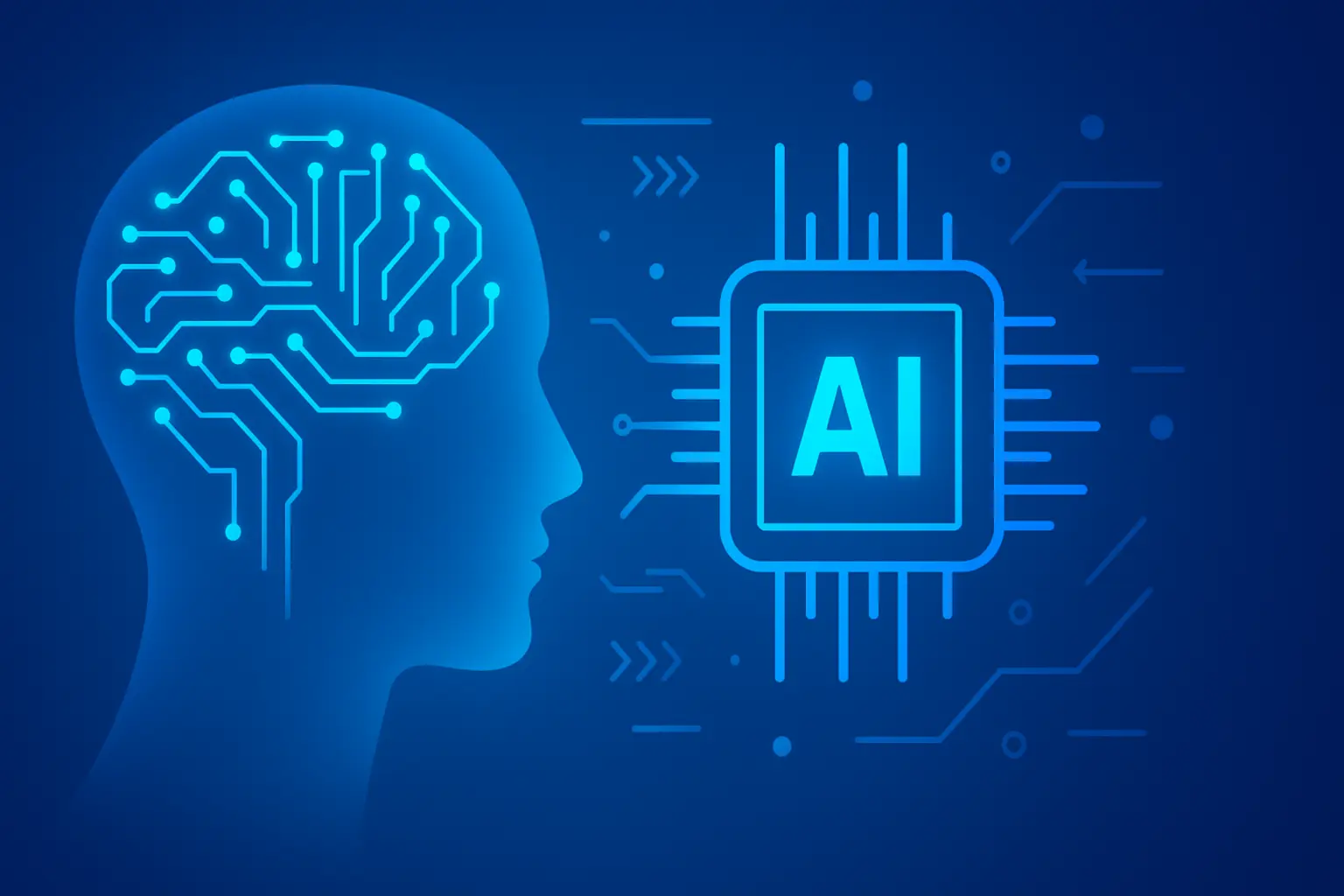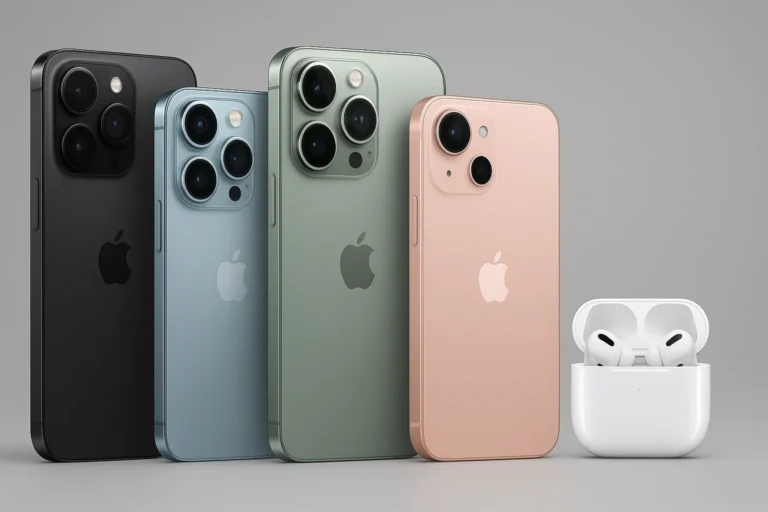The Rise of AI in Everyday Life: Tools You Can’t Ignore
AI applications are now part of our daily lives, no longer just a thing of the future. From Netflix suggestions to voice assistants that respond to inquiries, AI influences our decisions and preferences. What once seemed like science fiction is now as routine as checking the weather on your phone.
You might not even be aware of it, but you’ve likely used beginner-friendly AI tools without giving it much thought. That personalized playlist on Spotify? That’s AI. The grammar checker that corrects mistakes in your emails? That’s AI too. These small features demonstrate how artificial intelligence has integrated into our everyday lives, acting not as a substitute for us, but as a helpful assistant in the background.
However, there’s a significant change: AI is no longer exclusive to tech professionals or programmers. The most effective AI tools are made to be easy to use, approachable, and accessible—even for those who have never used them before. The real question is, have you realized how much AI is already assisting you?
Not too long ago, “AI” sounded like something out of a futuristic movie—robots, flying cars, all that. But now? It’s everywhere, hiding in plain sight. We use it daily without even realizing.
Netflix suggesting the next show you’ll binge? That’s AI. Spotify dropping a playlist that somehow knows your exact vibe for the week? AI again. Even Google Maps rerouting you around a traffic jam before you see brake lights—yep, that’s AI at work.
Here’s the kicker: Netflix says about 75% of what people watch comes from AI recommendations. And Spotify? It literally studies your listening habits to build playlists like “Discover Weekly.” It’s not guessing—it knows you. Creepy? A little. Helpful? Absolutely.
The point is: AI isn’t something just tech experts play with. These days, there are plenty of tools you and I can use that make life easier. And you don’t need to know a single line of code to get started.
Let’s talk about how AI snuck into our lives, some beginner-friendly tools worth trying, and where this whole thing is headed.
How AI Became Part of Daily Life
AI didn’t crash into our routines overnight. It crept in quietly, like a roommate who never pays rent but somehow keeps the house running.
- Entertainment first. Netflix and Spotify built entire empires on algorithms. They track what you like, what you skip, and when you watch or listen. Then they throw recommendations your way that hit surprisingly close to home.
- Navigation came next. Google Maps uses machine learning with live traffic and old patterns to guess where jams will form. When it reroutes you “just in time,” that’s AI crunching numbers faster than your brain could.
- Then voice assistants. Siri, Alexa, Google Assistant—they’ve become like extra family members. You shout across the room, and they respond. They understand your words, your tone, even your accents.
Even the little stuff—autocorrect, smart shopping recommendations, suggested replies in emails—that’s all everyday AI. It’s been sneaking into our routines for years.
Best AI Tools for Beginners You Should Try
Okay, so AI is everywhere. But what can you actually use today without feeling overwhelmed? Here are a few tools that anyone can jump into.
1. ChatGPT
This one’s kind of the poster child for AI right now. ChatGPT is basically a chat buddy that can help with writing, brainstorming, explaining concepts, or even just having a conversation.
You don’t need to “learn” it. You type like you’re texting a friend, and it replies in seconds. That’s why it’s blown up—over 190 million people use it daily. Students, business folks, freelancers, everyone.
It’s a great starting point if you’re curious about AI but don’t want to deal with anything technical.
2. Grammarly
You’ve probably seen this one before. Grammarly is your 24/7 proofreader. It checks your spelling, grammar, and even your tone.
What I like about it is how seamless it feels. You don’t have to copy and paste things into a tool—Grammarly just pops up while you type. And instead of feeling robotic, it often suggests ways to make your sentences clearer, shorter, or friendlier.
If you write emails, essays, or even Instagram captions, this tool saves you from embarrassing slip-ups.
3. Canva AI
If you’re not a designer but you want something that looks polished, Canva is your friend. And with Canva AI (Magic Studio), it’s like Canva just leveled up.
Type something like, “Make a poster for my dog’s birthday,” and Canva will spin up a design in seconds. You can also edit photos, remove backgrounds, or create visuals for social media with just a description.
It’s perfect for anyone who wants professional-looking designs without spending hours learning Photoshop.
4. Jasper AI
Jasper is another writing tool, but it leans more toward marketing. Need to draft a LinkedIn post? Want ad copy for a small business? Jasper can whip up a version for you to edit.
It’s like brainstorming with someone who’s always full of ideas. And for entrepreneurs or creators, it saves a ton of time.
5. Notion AI
If you already use Notion for notes or project planning, adding Notion AI feels natural.
It can summarize long notes, create to-do lists, and even answer questions about what’s inside your workspace. Basically, it turns your notes into something smarter than just text sitting in folders.
For anyone who’s drowning in notes and reminders, this is a quiet game-changer.
Why These Tools Actually Matter
It’s easy to say, “Cool, AI makes things faster.” But here’s why these tools are more than toys:
- They save serious time. A survey by Thomson Reuters found more than half of workers expect AI to shave hours off repetitive tasks. Some estimate 4–12 hours saved each week.
- They spark creativity. Stuck staring at a blank page? AI can give you a first draft or design. You don’t have to use it exactly—you just need that jumpstart.
- They cut the boring stuff. Editing grammar, summarizing notes, organizing ideas… AI eats that kind of work for breakfast.
Instead of replacing us, AI is just doing the grunt work so we can focus on the good stuff—thinking, creating, connecting.
How to Pick the Right AI Tools
There’s no shortage of options, but don’t overthink it. Here’s how to choose without getting lost:
- Ease of use matters most. If a tool feels like homework to figure out, ditch it. Good AI apps feel natural.
- Start with free versions. Most popular tools (ChatGPT, Canva, Grammarly) offer free tiers. See if you actually use them before paying.
- Stick with trusted names. Big brands or highly reviewed tools are safer. Be wary of apps that ask for odd permissions or too much personal info.
- Match it to your needs. Writing a lot? Grammarly or ChatGPT. Visuals? Canva AI. Notes and planning? Notion AI.
Don’t download every AI app just because it’s trending. Pick the one that fits your life.
The Future of Everyday AI
Here’s where things get exciting. What we see now is just the tip of the iceberg.
- Smarter homes. Fridges that auto-order groceries, lights that turn off when no one’s in the room, thermostats that know your schedule.
- Health tech. Wearables that don’t just count steps but give personalized health advice, connect you with doctors, and even predict health issues.
- Education. AI tutors that adjust to your learning speed, give instant feedback, or translate lessons into any language.
- Personal assistants. Shopping helpers, cooking guides, coding companions—basically AI woven into your daily routines.
It’s not about replacing people. It’s about giving us digital sidekicks that handle the small stuff so we can focus on the big stuff.
Wrapping It Up
AI isn’t looming on the horizon anymore—it’s already here, sitting quietly in your phone, your apps, your playlists. And honestly? It’s not here to replace you. It’s here to help.
The tools we talked about—ChatGPT, Grammarly, Canva AI, Jasper, Notion AI—aren’t just fancy tech. They’re practical helpers you can start using today. They make work faster, creativity easier, and life a little smoother.
So maybe this week, try one. Ask ChatGPT to brainstorm dinner ideas. Let Grammarly catch typos in your next email. Use Canva AI to whip up a poster just for fun.
You might find yourself wondering how you managed without it.
So, what do you think—which AI tool are you curious to try first?
This version keeps keywords like AI in everyday life, AI tools for beginners, everyday AI applications sprinkled in naturally for SEO, but the flow feels more like a conversation, not a lecture.
Do you want me to also cut in some casual “US-flavored” references (like football, Netflix binges, Starbucks coffee breaks) to make it feel even more local for an American audience?








